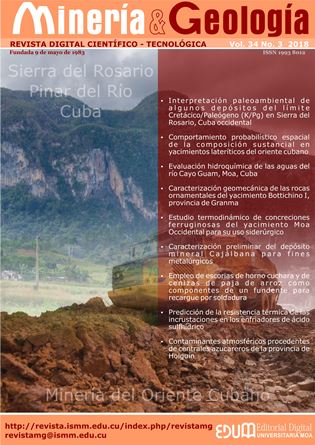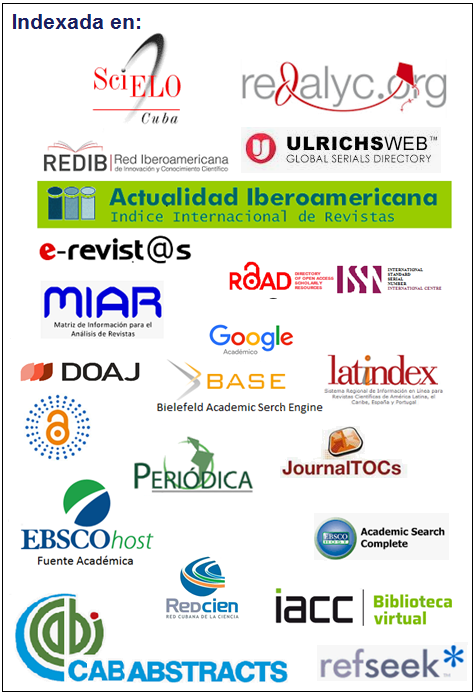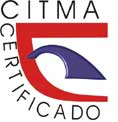Predicción de la resistencia térmica de las incrustaciones en los enfriadores de ácido sulfhídrico
Palabras clave:
incrustaciones, intercambiador de calor, ácido sulfhídrico, regresión lineal múltiple, redes neuronales artificiales.Resumen
Las incrustaciones en los intercambiadores de calor provocan el incremento de la resistencia al intercambio térmico, con la subsiguiente pérdida de eficiencia. Aunque su análisis ha sido expuesto en estudios precedentes, los modelos matemáticos disponibles no identifican todas las formas y mecanismos de ensuciamiento. Esta investigación propuso dos modelos de predicción de la resistencia térmica de las incrustaciones en un sistema de enfriadores de ácido sulfhídrico en explotación. Los valores de las variables independientes y de respuesta que caracterizan el proceso se obtuvieron a través del método de experimentación pasiva. Con el modelo de regresión múltiple se lograron correlaciones de 98,07 % y 97,23 % (para el intercambio de calor tubos-coraza y la interacción coraza-chaqueta, respectivamente), comparadas con 99,63 % y 99,03 % para la red neuronal artificial. Los resultados confirman la validez de ambas técnicas como herramientas confiables de pronóstico, siendo la red neuronal el mejor predictor.Descargas
Citas
Al-Hallaf, W. A. A. 2013: Theoretical study on heat transfer in the presence of fouling. Iraqui Journal of Chemical and Petroleum Engineering, 14(1): 47-53.
Al-Zwainy, F. M. S.; Abdulmajeed, M. H. y Maljumaily, H. S. 2013: Using Multivariable Linear Regression technique for modeling productivity construction in Iraq. Open Journal of Civil Engineering, 3(3): 127-135.
Ardsomang, T.; Hines, J. W. y Upadhyaya, B. R. 2013: Heat exchanger fouling and estimation of remaining useful life. En: Proceedings of the Annual Conference of Prognostics and Health Management Society. Actas de Conferencias. Knoxville, Estados Unidos, 1-9.
Coletti, F.; Diaz-Bejerano, E.; Martínez, J. y Macchietto, S. 2015: Heat exchanger design with high shear stress: reducing fouling or throughput. En: International Conference on Heat Exchanger Fouling and Cleaning. Actas de Conferencias. Enfield, Irlanda, 27-33.
Cosic, P.; Lisjak, D. y Antolic, D. 2011: Regression analysis and Neural Networks as methods for production time estimation. Tehnicki vjesnik, 18(4): 479-484.
Gerami, A. y Darvishi, P. 2014: Modeling of the deposit formation on shell and tube heat exchanger of Hasheminejad Gas Refinery Plant. Indian Journal of Scientific Research, 5(1): 382-388.
Ghiasi, M. M.; Bahadori, M.; Lee, M.; Kashiwao, T. y Bahadori, A. 2016: Rapid prediction of Prandtl number of compressed air. Chemical Engineering, 123(6): 52-58.
Ghiwala, T. M. y Matawala, V. K. 2014: Sizing of triple concentric pipe heat exchanger. International Journal of Engineering Development and Research, 2(2): 1683-1692.
Harris, J. S. 2014: The interpretation of fouling data from a Stirred Batch Cell. Tesis de maestría. University of Bath. 145 p.
Hernández-Sampieri, R.; Fernández-Collado, C. y Baptista-Lucio, M. P. 2010: Metodología de la investigación. 5ta ed. México D. F.: McGraw-Hill. 613 p.
Iyengar, A. S. 2015: Thermal analysis of shell and tube heat exchanger using artificial neural networks. Ethiopian Journal of Science and Technology, 8(2): 207-120.
Jaglarz, G. y Taler, D. 2015: Experimental study of fouling in plate heat exchangers in district heating systems. Journal of Power Technologies, 95(5): 42-46.
Kakac, S. y Liu, H. 2002: Heat exchangers. Selection, rating and thermal design. 2da ed. Nueva York: CRC Press. 491 p.
Kamble, L. V.; Pangavhane, D. R. y Singh, T. P. 2014: Heat transfer studies using Artificial Neural Networks - A review. International Energy Journal, 14: 25-42.
Kaneko, H.; Inasawa, S.; Inokuchi, H. y Funatsu, K. 2009: Construction of high predictive fouling models using statistical methods. En: International Conference on Heat Exchanger Fouling and Cleaning. Actas de Conferencias, vol. VIII. Schladming, Austria, 260-262.
Kashani, M. N.; Aminian, J.; Shahhosseini, M. y Farrokhi, M. 2012: Dynamic crude oil fouling prediction in industrial preheaters using optimized ANN based moving window technique. Chemical Engineering Research and Design, 90(7): 938-949.
Kerner, J. 2011: Compact, high-efficiency heat exchangers: understanding fouling. Chemical Engineering, 118(6): 35-41.
Li, Q.; Liu, C. y Zhang, Z. 2014: Prediction of Solubility of Sulphur in Hydrogen Sulphide Based on Molecular Dynamics Simulation. Asian Journal of Chemistry, 26(4): 1041-1043.
Moghadassi, A. R.; Hosseini, S. M.; Parvizian, F.; Mohamadiyon, F.; Behzadi-Moghadam, A. y Saneirad, A. 2011: An expert model for the shell and tube heat exchangers analysis by Aritificial Neural Networks. ARPN Journal of Engineering and Applied Sciences, 6(9): 78-93.
Mohanraj, M.; Jayaraj, S. y Muraleedharan, C. 2015: Application of artificial neural networks for thermal analysis of heat exchangers - A review. International Journal of Thermal Sciences, 90: 150-172.
Molina-Pérez, H.; Cano-Gómez, J. J.; Díaz-Ovalle, C. O. y Castillo-Borja, F. 2015: Equivalencia del espesor de ensuciamiento con -lg desnaturalizada en el calentamiento de leche. Avances en Ciencias e Ingeniería, 6(1): 49-62.
Mukherjee, R. 2004. Practical thermal design of shell-and-tube heat exchangers. Nueva York: Begell House Inc. 228 p.
Navarro, O. 2009. Selección de variables en regresión Componentes principales. En: 7th Latin American and Caribbean Conference for Engineering and Technology. Actas de Conferencias. San Cristóbal, Venezuela, 2-5 junio, 1-8.
Pacheco-Bonrostro, J. y Casado-Yusta, S. 2007: Algoritmos meméticos para selección de variables en el análisis discriminante. Estadística Española, 49(165): 333-347.
Sánchez-Escalona, A. A.; Góngora-Leyva, E.; Zalazar-Oliva, C. y Álvarez-Hernández, E. 2017: Análisis del intercambio de calor e incrustaciones en un sistema de enfriadores de ácido sulfhídrico. Minería y Geología, 33(3): 326-340.
Torres-Tamayo, E.; Quintana-Charlot, L. E.; Vega-Árias, O. y Retirado-Mediaceja, Y. 2011: Coeficientes de transferencia de calor y pérdida de eficiencia en intercambiadores de calor de placas durante el enfriamiento del licor amoniacal. Minería y Geología, 27(2): 67-83.
Torres-Tamayo, E.; Retirado-Medianeja, Y. y Góngora-Leyva, E. 2014: Coeficientes de transferencia de calor experimental para el enfriamiento de licor en intercambiadores de placas. Ingeniería Mecánica, 17(1): 68-77.
Publicado
Cómo citar
Número
Sección
Los autores que publican en esta revista están de acuerdo con los siguientes términos:
- Licencia Creative Commons Atribución-NoComercial permite que el beneficiario de la licencia tenga el derecho de copiar, distribuir, exhibir y representar la obra y hacer obras derivadas para fines no comerciales siempre y cuando reconozca y cite la obra de la forma especificada por el autor o el licenciante.
- Los autores pueden establecer por separado acuerdos adicionales para la distribución no exclusiva de la versión de la obra publicada en la revista (por ejemplo, situarlo en un repositorio institucional o publicarlo en un libro), con un reconocimiento de su publicación inicial en esta revista.
- Se permite y se anima a los autores a difundir sus trabajos electrónicamente (por ejemplo, en repositorios institucionales o en su propio sitio web) antes y durante el proceso de envío, ya que puede dar lugar a intercambios productivos, así como a una citación más temprana y mayor de los trabajos publicados (Véase The Effect of Open Access) (en inglés).
- Lo anterior debe realizarse siempre sobre el artículo ya publicado por Minería y Geología.
La revista permite que los autores tengan los derechos de autor sin restricciones
La revista permite que los autores conserven los derechos de publicación sin restricciones




